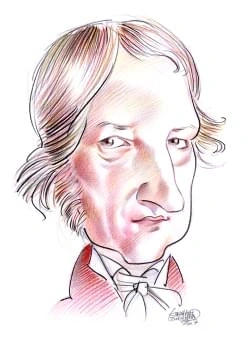242 résultats pour "valley"
-
Utah - geography.
Temperatures decrease from the south to the north in the state. In the mountains the average temperature drops about 0.5°C (about 1°F) for every about 300 m(about 1,000 ft) rise in elevation. Average July temperatures range from less than 16°C (60°F) in the mountains to more than 27°C (80°F) in a few locations insouthern Utah. At Salt Lake City average July temperatures range from a low of 18°C (64°F) to a high of 33°C (92°F). There is a great variation between daytime andnighttime temperatures,...
-
Utah - USA History.
Temperatures decrease from the south to the north in the state. In the mountains the average temperature drops about 0.5°C (about 1°F) for every about 300 m(about 1,000 ft) rise in elevation. Average July temperatures range from less than 16°C (60°F) in the mountains to more than 27°C (80°F) in a few locations insouthern Utah. At Salt Lake City average July temperatures range from a low of 18°C (64°F) to a high of 33°C (92°F). There is a great variation between daytime andnighttime temperatures,...
-
North Dakota - geography.
Bismarck, the growing season averages 134 days, as the average date of the last killing frost is May 11 and that of the first killing frost is September 22. The length ofthe growing season drops to about 110 days in the northerly reaches of the state. The long periods of summer sunshine at this latitude, providing as much as 16 hoursof daylight in summer, help crops to mature quickly, thus compensating somewhat for the relatively short growing season. Temperatures in the north are, on the averag...
-
North Dakota - USA History.
Bismarck, the growing season averages 134 days, as the average date of the last killing frost is May 11 and that of the first killing frost is September 22. The length ofthe growing season drops to about 110 days in the northerly reaches of the state. The long periods of summer sunshine at this latitude, providing as much as 16 hoursof daylight in summer, help crops to mature quickly, thus compensating somewhat for the relatively short growing season. Temperatures in the north are, on the averag...
-
American Westward Movement - U.
British expansion. However, Native Americans of the Great Lakes and Ohio Valley lashed out against the English in an attempt to preserve their independence, theirland, and their way of life. With the Ottawa chief Pontiac as their most visible leader, the tribes waged a bloody and costly war. As a result, the British governmentdecided to keep the white settlers apart from the Native Americans. It issued the Royal Proclamation of 1763, banning all white settlement beyond the Appalachians andstatin...
-
New France - Canadian History.
the colony now consisted of a governor-general, an intendant , and a Sovereign Council, all located at Québec, with local governors at Trois-Rivières and Montréal, and law courts for all three districts. The senior official was the governor-general, responsible for military matters and for relations with the indigenous nations and theEnglish colonies. The intendant, a noble trained in law, was the official responsible for civil affairs: justice, law enforcement, and the maintenance of the colon...
-
Northwest Territories - Geography.
million years ago by the severe bending (folding) and faulting (breaking) of sedimentary rock that was once part of the Interior Plains. During the Wisconsin Ice Age,alpine glaciers covered the Cordillera, and the movement of the glaciers created razor-sharp peaks and ridges in these mountains. The moving glaciers also createdbroad U-shaped valleys. To the east of the Interior Plains, the ancient rocks of the Canadian Shield are exposed at the Earth’s surface, resulting in a rough, rolling terra...
-
Northwest Territories - Canadian History.
million years ago by the severe bending (folding) and faulting (breaking) of sedimentary rock that was once part of the Interior Plains. During the Wisconsin Ice Age,alpine glaciers covered the Cordillera, and the movement of the glaciers created razor-sharp peaks and ridges in these mountains. The moving glaciers also createdbroad U-shaped valleys. To the east of the Interior Plains, the ancient rocks of the Canadian Shield are exposed at the Earth’s surface, resulting in a rough, rolling terra...
-
-
Arizona - geography.
of the Mogollon Rim, the Little Colorado draws very little water from a relatively large watershed, usually containing a mere trickle of water in its riverbed. The ColoradoRiver’s principal tributary is the Gila River, which flows all the way across the southern part of the state from New Mexico to the California border. From the mountainsand plateaus of central Arizona, the Gila River receives the Salt, Agua Fria, and Hassayampa rivers. The Salt River is itself fed by the Verde River. The Gila...
-
Arizona - USA History.
of the Mogollon Rim, the Little Colorado draws very little water from a relatively large watershed, usually containing a mere trickle of water in its riverbed. The ColoradoRiver’s principal tributary is the Gila River, which flows all the way across the southern part of the state from New Mexico to the California border. From the mountainsand plateaus of central Arizona, the Gila River receives the Salt, Agua Fria, and Hassayampa rivers. The Salt River is itself fed by the Verde River. The Gila...
-
Canada.
Six general landform regions are distinguishable in Canada: the Appalachian Region, the Great Lakes and St. Lawrence Lowlands, the Canadian Shield, the Great Plains,the Canadian Cordillera, and the Canadian Arctic Archipelago. B1 Appalachian Region and Great Lakes and St. Lawrence Lowlands Eastern Canada consists of the Appalachian Region and the Great Lakes and St. Lawrence Lowlands. The Appalachian Region embraces Newfoundland Island, NovaScotia, New Brunswick, Prince Edward Island, and the G...
-
Canada - country.
Six general landform regions are distinguishable in Canada: the Appalachian Region, the Great Lakes and St. Lawrence Lowlands, the Canadian Shield, the Great Plains,the Canadian Cordillera, and the Canadian Arctic Archipelago. B1 Appalachian Region and Great Lakes and St. Lawrence Lowlands Eastern Canada consists of the Appalachian Region and the Great Lakes and St. Lawrence Lowlands. The Appalachian Region embraces Newfoundland Island, NovaScotia, New Brunswick, Prince Edward Island, and the G...
-
Canada - Canadian History.
Six general landform regions are distinguishable in Canada: the Appalachian Region, the Great Lakes and St. Lawrence Lowlands, the Canadian Shield, the Great Plains,the Canadian Cordillera, and the Canadian Arctic Archipelago. B1 Appalachian Region and Great Lakes and St. Lawrence Lowlands Eastern Canada consists of the Appalachian Region and the Great Lakes and St. Lawrence Lowlands. The Appalachian Region embraces Newfoundland Island, NovaScotia, New Brunswick, Prince Edward Island, and the G...
-
India - country.
delta in the north, are intensely farmed. B Rivers and Lakes The rivers of India can be divided into three groups: the great Himalayan rivers of the north, the westward-flowing rivers of central India, and the eastward-flowingrivers of the Deccan Plateau and the rest of peninsular India. Only small portions of India’s rivers are navigable because of silting and the wide seasonal variation inwater flow (due to the monsoon climate). Water transport is thus of little importance in India. Barrages,...
-
Uzbekistan - country.
E Environmental Issues The evaporation of the Aral Sea is one of the worst ecological disasters in the world. The Aral has shrunk so much that it now holds only about one-fifth the volume ofwater it held in 1960. The shrinkage is due to irrigation withdrawals from the Amu Darya and Syr Darya, a practice that began on a massive scale in the early 1960s aspart of the Soviet Union’s ill-conceived drive to increase cotton yields in Central Asia. Growing cotton in the naturally arid and saline soil...
-
Switzerland - country.
formation over higher elevations. The wind reverses direction about sundown and moves down the valley as a cool downdraft. The foehn, which occurs during the wintermonths, is a dry and relatively warm airflow that is drawn northward over the Alps. The foehn can quickly melt snow and ice, increasing the risk of mudslides andavalanches. D Natural Resources Waterpower is the chief natural resource of Switzerland. The principal source of water is runoff from the considerable annual precipitation th...
-
-
Iowa - geography.
Okoboji, Lost Island, Silver, and West Swan lakes. In addition, reservoirs have been created by damming several smaller Iowa rivers. There are a number of largereservoirs behind dams on the Mississippi River along the Iowa state line. C Climate Iowa’s climate is characterized by warm, generally moist summers and cold winters. Temperatures vary considerably from season to season and, at times, from day today. However, monthly averages are relatively uniform throughout the state and usually vary...
-
Iowa - USA History.
Okoboji, Lost Island, Silver, and West Swan lakes. In addition, reservoirs have been created by damming several smaller Iowa rivers. There are a number of largereservoirs behind dams on the Mississippi River along the Iowa state line. C Climate Iowa’s climate is characterized by warm, generally moist summers and cold winters. Temperatures vary considerably from season to season and, at times, from day today. However, monthly averages are relatively uniform throughout the state and usually vary...
-
Afghanistan - country.
D Climate Most of Afghanistan has a subarctic mountain climate with dry and cold winters, except for the lowlands, which have arid and semiarid climates. In the mountains and afew of the valleys bordering Pakistan, a fringe effect of the Indian monsoon, coming usually from the southeast, brings moist maritime tropical air in summer.Afghanistan has clearly defined seasons: Summers are hot and winters can be bitterly cold. Summer temperatures as high as 49°C (120°F) have been recorded in thenorth...
-
San Jose (California) - geography.
San Jose has a rich selection of performing arts, including the San Jose Repertory Theatre, the American Musical Theatre of San Jose, Opera San Jose, Ballet San JoseSilicon Valley, and the Margaret Wingrove Dance Company. Annual events include the San Jose Jazz Festival in August and the San Jose Film Festival, beginning in January.The city has numerous community festivals throughout the year, many celebrating ethnic themes. V RECREATION The largest of the many parks inside San Jose is Alum Roc...
-
Bulgaria - country.
E Climate Most of Bulgaria has a continental climate, with cold winters and hot summers. The climate in general is more severe than in other European areas of the samelatitudes, and the average annual temperature range is greater than that of neighboring countries. Severe droughts, frosts, winds, and hail storms frequently damagecrops. A Mediterranean climate, with dry summers and mild, humid winters, prevails in the valley of the southwestern Rhodope Mountains; the northern limit of theclimati...
- Kivu. lac d'Afrique situé dans la Rift Valley, entre le
-
Indian Treaties in Canada - Canadian History.
Pontiac led an attack on British forts in the Great Lakes area to end British domination and to reinforce Indian autonomy. In response, British king George III issued theRoyal Proclamation of 1763 to try to appease the Indians of the interior. The proclamation set aside land for the Indians west of the Appalachian Mountains anddescribed this land as “lands reserved to [Indians] … as their Hunting Grounds.” The proclamation not only recognized Indian land ownership, but also required thattreaties...
- Erskine Caldwell 1903-1987 Né à Moreland (Géorgie), mort à Paradise Valley (Arizona).
-
- Death Valley (« Vallée de la Mort »), profonde et étroite dépression de l'est de la Californie, aux États-Unis.
- Caldwell (Erskine Preston) Écrivain américain (White Oak, Géorgie, 1903 - Paradise Valley, Arizona, 1987).
-
Yellowknife (Northwest Territories) - Geography.
VII HISTORY Indigenous nations have lived around Yellowknife Bay for thousands of years. The historic occupants were the Athapaskan-speaking Dogrib people, hunters of caribou.The Dogrib were displaced briefly in the early 19th century by the Yellowknife band of the Chipewyan nation, who moved into the area to participate in the fur trade.The bay, and eventually the city, were named for the Yellowknife band, whose name is believed to derive from their yellow knife blades hammered out of native...
-
África - geografía.
genetistas, debido a que sus poblaciones de animales salvajes están aisladas de las del resto del país por las paredes del cráter. Éstese localiza dentro de la Zona de Conservación Ngorongoro, declarado Patrimonio de la Humanidad, que también incluye la gargantade Olduvai, donde se han encontrado restos de algunos de los primeros antepasados del ser humano.Nicholas Parfitt/Tony Stone Images El relieve africano se caracteriza por su horizontalidad debido a la presencia de vastas y onduladas meset...
-
River.
IV RIVER PATTERNS River patterns, or general shapes, depend on the geologic zone and the climate of the location. There are four river patterns: meandering, braided, anastomosing, andstraight. A meandering pattern follows a winding, turning course. A braided pattern has connected channels that resemble a hair braid. An anastomosing river patterncombines features of the meandering and braided patterns. Some river patterns are simply straight channels. Meandering and braided are the most common...
-
River - Geography.
IV RIVER PATTERNS River patterns, or general shapes, depend on the geologic zone and the climate of the location. There are four river patterns: meandering, braided, anastomosing, andstraight. A meandering pattern follows a winding, turning course. A braided pattern has connected channels that resemble a hair braid. An anastomosing river patterncombines features of the meandering and braided patterns. Some river patterns are simply straight channels. Meandering and braided are the most common...
-
Japan - country.
island’s fertile soils support agriculture and provide the vast majority of Japan’s pasturelands. In addition, Hokkaidō contains coal deposits, and the cold currents off itsshores supply cold-water fish. Winters are long and harsh, so most of Hokkaid ō is lightly settled, housing about 5 percent of Japan’s population on approximately 20 percent of its land area. However,its snowy winters and unspoiled natural beauty attract many skiers and tourists. Hokkaid ō is thought of as Japan’s northern fr...
-
San Francisco.
sont certains noyaux d'Oakland, ville surtout industrielle, Berkeley et son campus où est né le mouvement hippie, Vallejo où l'on construit des sous-marins nucléaires et, au sud, San Jose, Palo Alto et la Silicon Valley. Tout au nord, Marin County est le domaine des marinas de luxe. Malgré les brouillards tenaces qui, même l'été, affectent la presqu'île sur plusieurs kilomètres, malgré la menace permanente des séismes, San Francisco est une ville séduisante et attractive. Complétez votre r...
-
-
Phoenix (city, Arizona) - geography.
alfalfa, durum wheat, vegetables, citrus and other fruits, and beef and dairy cattle. The health service industry is a large and growing part of the city’s economy. United States State Capitals© Microsoft Corporation. All Rights Reserved. Phoenix is served by interstate highways 10 and 17, the Southern Pacific and the Burlington Northern Santa Fe railroads, and Sky Harbor International Airport. In its early years, Phoenix became popular as a haven for winter visitors from North America’s colder...
-
Nebraska - geography.
by natural resource districts to limit the rate of pumping for irrigation. C Climate Nebraska has a typical continental climate with wide seasonal variations in temperature. C1 Temperature Winter temperatures below -20°C (0° F) and summer temperatures in the upper 30°s C (lower 100°s F) are common. The average January temperature varies from about -7° C (about 20° F) in the northeast to about -2° C (about 29° F) in the southwest. The average for July, thehottest month, ranges from about 26° C...
-
Nebraska - USA History.
by natural resource districts to limit the rate of pumping for irrigation. C Climate Nebraska has a typical continental climate with wide seasonal variations in temperature. C1 Temperature Winter temperatures below -20°C (0° F) and summer temperatures in the upper 30°s C (lower 100°s F) are common. The average January temperature varies from about -7° C (about 20° F) in the northeast to about -2° C (about 29° F) in the southwest. The average for July, thehottest month, ranges from about 26° C...
-
Vermont - geography.
Forests cover 78 percent of Vermont. Most of the trees are deciduous, principally the maple, elm, birch, beech, oak, hickory, ash, cherry, and butternut. The state treeis the sugar maple, which provides Vermont’s famous maple syrup. Conifers are common in some mountain areas and include mainly the white pine, red spruce,hemlock, and cedar. A great variety of ferns have been found within the state. Among the more common wildflowers that grow in Vermont are anemones, arbutuses,violets, lilacs, dai...
-
Vermont - USA History.
Forests cover 78 percent of Vermont. Most of the trees are deciduous, principally the maple, elm, birch, beech, oak, hickory, ash, cherry, and butternut. The state treeis the sugar maple, which provides Vermont’s famous maple syrup. Conifers are common in some mountain areas and include mainly the white pine, red spruce,hemlock, and cedar. A great variety of ferns have been found within the state. Among the more common wildflowers that grow in Vermont are anemones, arbutuses,violets, lilacs, dai...
-
Herman Melville
I
INTRODUCTION
Herman Melville
These lines (recited by an actor) begin the novel Moby Dick (1851), by Herman Melville.
short novel Billy Budd in manuscript form. Melville’s death in New York City on September 28, 1891, went virtually unnoticed. None of his books was still in print. VI MELVILLE’S EARLY WORKS With the exception of Mardi , all of Melville’s early books are narratives of maritime adventure based upon his own experiences and on his wide reading. Although London publisher John Murray accepted Typee for his Home and Colonial Library as a strictly factual account of South Seas travel, he was lar...
-
Nevada - geography.
The Truckee, Carson, and Walker rivers flow out of the Sierra Nevada, thread their way around several of the desert ranges, and also end in closed basins. The Walkerflows into Walker Lake, the Carson into Lahontan Reservoir. The major part of the Truckee’s flow is now diverted to Lahontan Reservoir, although as required by lawsome of it empties into Pyramid Lake. Because these three streams flow constantly, the lakes into which they empty never dry up. Winnemucca Lake formerly receivedoverflow w...
-
Nevada - USA History.
The Truckee, Carson, and Walker rivers flow out of the Sierra Nevada, thread their way around several of the desert ranges, and also end in closed basins. The Walkerflows into Walker Lake, the Carson into Lahontan Reservoir. The major part of the Truckee’s flow is now diverted to Lahontan Reservoir, although as required by lawsome of it empties into Pyramid Lake. Because these three streams flow constantly, the lakes into which they empty never dry up. Winnemucca Lake formerly receivedoverflow w...
-
-
Chile - country.
D Plant and Animal Life The indigenous plant life of Chile varies according to climatic zone. Plant life in the northern region includes brambles and cactus and has little variety. Here, theAtacama provides one of the best examples on Earth of an absolute desert. The more humid Central Valley supports several species of cacti, espino (a thorny shrub),grasses, and the Chilean pine, which bears edible nuts. Dense rain forests are located south of Valdivia with laurel, magnolia, false beech, and v...
-
Indo-Pakistani Wars - History.
wrest Jammu and Kashmīr from India through the use of force. This effort failed as India held its ground, and the war ended in a stalemate after almost two months ofarmed conflict. Although the second war over the territory was shorter than the first, the increased firepower of the two nations resulted in a more deadly war, with atotal of about 6,800 battle casualties. A Events Before the War A number of factors precipitated the second conflict over Jammu and Kashm īr. In the wake of a border w...
-
Massachusetts - geography.
mi). Other large artificial lakes include Wachusett Reservoir, East Brimfield Reservoir, and Cobble Mountain Reservoir. Assawompsett Pond, covering about 10 sq km(about 4 sq mi), is the largest natural lake. North Watuppa Pond and Long Pond are other large natural lakes. Lake Chaubunagungamaug, near Webster, is usuallycalled Webster Lake, because the Algonquian name is difficult to pronounce and spell. The full version of the Native American name is said to be the longest place-namein North Amer...
-
Native Americans of Middle and South America.
A line that snakes across central Mexico near the Tropic of Cancer forms the northern boundary of Mesoamerica; north of this line rainfall sharply declines and theclimate is much drier. The ancient civilizations of Mesoamerica all arose and developed in the area between this line and the Guatemalan highlands far to the south. Richvolcanic soils are found throughout much of the region. A2 People and Languages Mesoamerica was a great melting pot, home to many peoples and interrelated cultures. In...
-
Tajikistan - country.
by more than 100 percent due to a high birth rate and improvements in medical care. During the early 1990s, however, the growth rate began to decline due to civilwar and emigration. A Ethnic Groups and Languages Tajiks constitute the largest ethnic group in Tajikistan, making up about 65 percent of the population. The peoples who live in Gorno-Badakhshan, located in the Pamirs,are classified as Tajiks, although their languages and customs are distinct. The largest minority group in the country...
-
Oklahoma - geography.
portion and the Panhandle are classified as a steppe, where precipitation, typically 250 to 500 mm (10 to 20 in), is the controlling characteristic. January is usually the coldest month with an average of about 3°C (38°F) and extremes from -33°C (-27°F), the lowest ever recorded, to 33°C (92°F). Summer arelong and hot with temperatures in the upper 30°s C (lower 100°s F) common from May until September across the state. The growing season varies from less than 180days in the western Panhandle to...
-
Oklahoma - USA History.
portion and the Panhandle are classified as a steppe, where precipitation, typically 250 to 500 mm (10 to 20 in), is the controlling characteristic. January is usually the coldest month with an average of about 3°C (38°F) and extremes from -33°C (-27°F), the lowest ever recorded, to 33°C (92°F). Summer arelong and hot with temperatures in the upper 30°s C (lower 100°s F) common from May until September across the state. The growing season varies from less than 180days in the western Panhandle to...
-
Minnesota - geography.
C Climate Minnesota’s climate is classified as humid continental because normally there is a sufficient amount of precipitation to provide at least some surplus for runoff, andbecause Minnesota’s temperature conditions are largely controlled by its location in the interior of the large landmass of North America. The result is extreme seasonaltemperature variations. The average January temperature is about -18°C (about 0°F) in the northwest and about -10°C (about 14°F) in the south, but thetherm...
-
-
Minnesota - USA History.
C Climate Minnesota’s climate is classified as humid continental because normally there is a sufficient amount of precipitation to provide at least some surplus for runoff, andbecause Minnesota’s temperature conditions are largely controlled by its location in the interior of the large landmass of North America. The result is extreme seasonaltemperature variations. The average January temperature is about -18°C (about 0°F) in the northwest and about -10°C (about 14°F) in the south, but thetherm...
-
Kansas - geography.
at the adjoining cities of Kansas City, Kansas, and Kansas City, Missouri. Its chief headstreams are the Republican and Smoky Hill rivers, which join to form the KansasRiver at Junction City. Each of the headstreams has numerous tributaries. The Kansas River proper is only 270 km (170 mi) long, but the Smoky Hill River has a lengthof 870 km (540 mi), and the Republican River has a length of 720 km (450 mi). The main tributary flowing into the Kansas River is the Big Blue River. The Arkansas Rive...
}})








